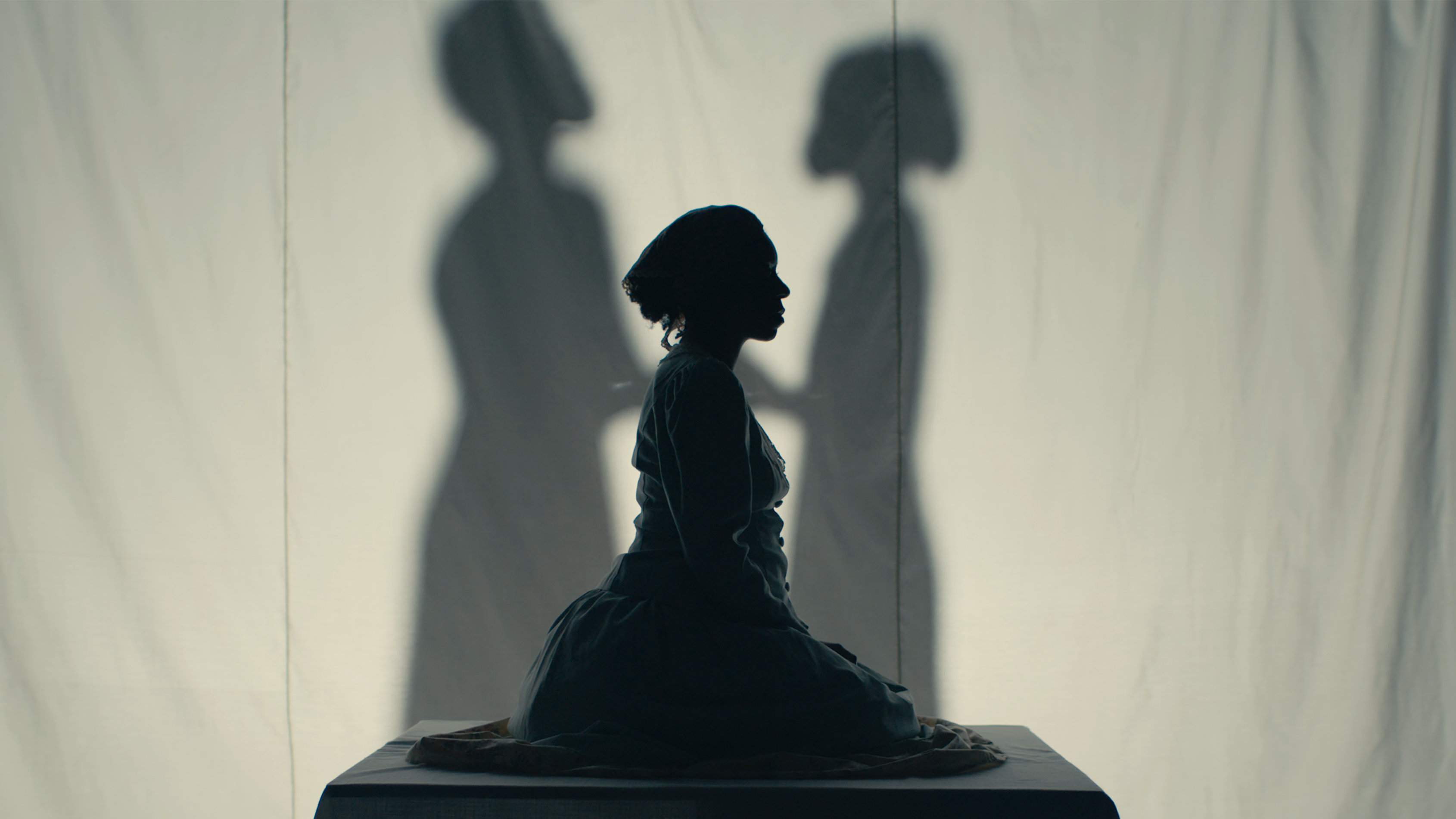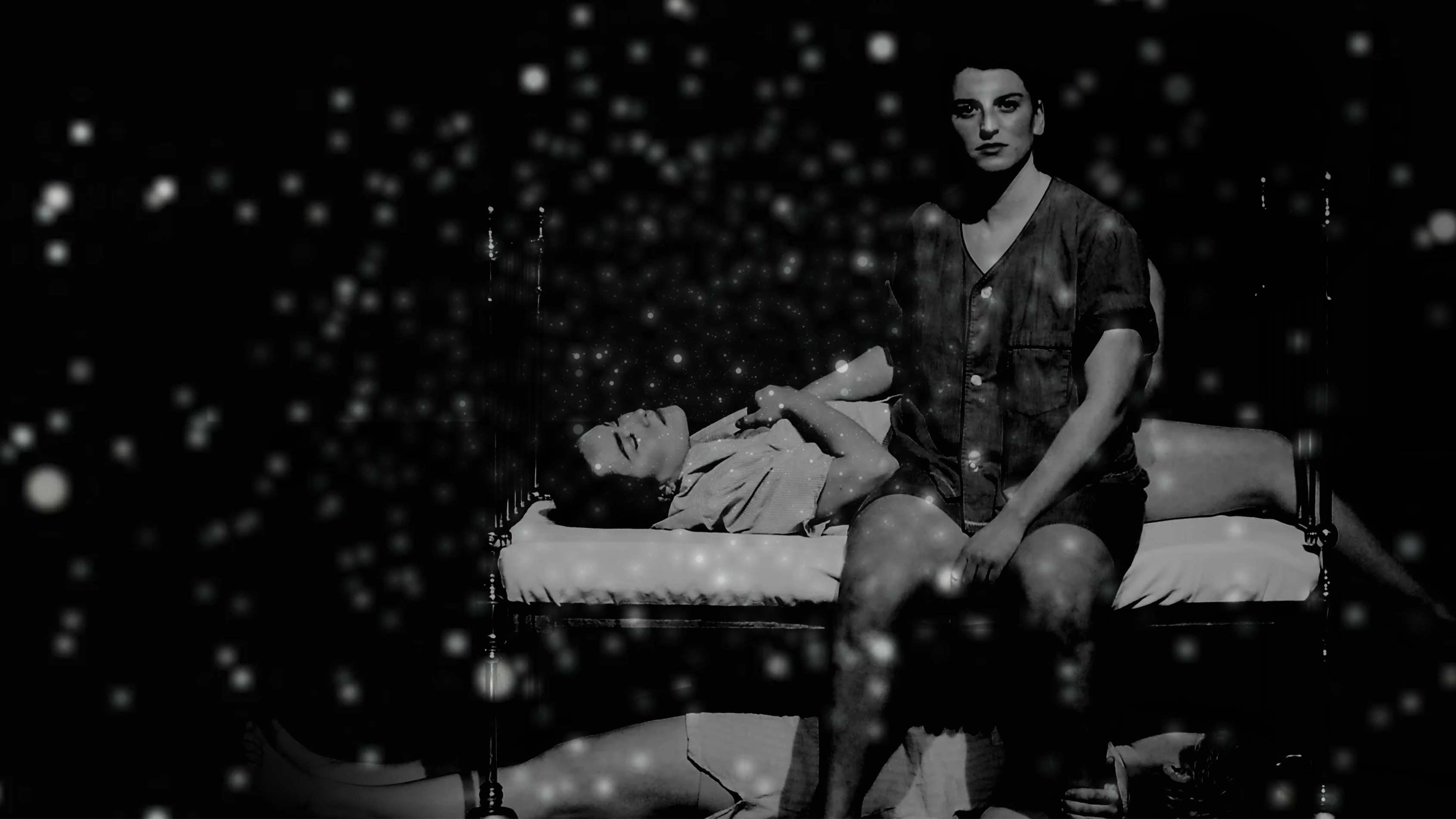All images are courtesy of the creative team behind Bone Black: Midwives vs the South.

Bone Black: Midwives vs the South is an experimental documentary that is a love letter to Black birth workers and Black mothers.
The project is part of the “Queen Collective” initiative - a series of short films told by Black directors who identify as female or nonbinary. The program was created in a partnership with Procter & Gamble, Queen Latifah’s Flavor Unit Entertainment, and Tribeca Studios.
“They had an open call for proposals to create films that spoke to some of their sponsors,” explains Director Imani Dennison. “So, I pitched this idea for a film about Black women birth workers and it developed into Bone Black: Midwives vs the South.”
In Bone Black, the camera follows multiple women from all different walks of life, such as a traditional midwife, a doula working towards her midwife license, a mother who’s had complications in her pregnancy, and more.
The team also avoided talking heads in their documentary.
“We use archival not only to give historical context, but we use it to really add cinematic texture,” points out Producer Flor Tejada, “The way that we use archival - it's not just to show history, but it's also to drive the visuals of the narrative through.”

The antagonist of the film is the government agencies that made it difficult for Black midwives to get licenses. Yet, that relationship can be difficult to portray visually.
As a result, the film is built on surrealist recreations of a different piece of reproductive history, or what the team termed ‘tableaus’. The tableaus’ function is to evoke a situation without necessarily replicating the trauma.
“All these beautiful tableaus, which Cathy (Ye) shot, were filmed in a studio in New York,” mentions Flor.
For example, Flor highlights the tableau which recreated a famous painting depicting medical racism. It’s a portrait of the founder of gynecology, who’d subjected enslaved Black women to surgeries without anesthesia in order to perfect his medical technique.
“We really expanded on that, where we were playing with the shadows and light and dark and we had a choreographer,” Flor elaborates. “It’s definitely more of a performance piece and felt like a really beautiful way to show that imagery of that arresting photograph.”

Although the tableaus greatly enhanced the film overall, a few of them proved to be challenging to shoot during production.
“One of our characters, Ms. Luisah Teish, carries us through the film,” recounts Imani. “She’s a brilliant elder who acted as our scribe.”
The Art Department had built an altar space in a plantation as a tableau for the subject to sit and pay respects. But, the time the filmmakers had with her in Louisiana was frustratingly cut in half.
While filming time was suddenly limited, Louise is also a brilliant storyteller, writer, and historian. She showed up and delivered a really important piece of history that grounds the audience in the project - even if it was all under twenty minutes.
Another surreal scene reimagined the birthing experience through filming water.
“One of the biggest challenges immediately starting the shoot was one of our biggest tableaus,” mentions Cathy. “We call it, lovingly, the waterbirth tableau.”
The waterbirth tableau was the production's largest and most ambitious physical set, along with the biggest crew. Before filming, the team was unable to scout the space until the day before pre-light.
“Their photos online felt like a different size in-person,” Cathay explains. “That scene was one that we had to constantly sort of adapt and revisit with each other.”

Director of Photography Cathy Ye was facing another challenge. She recognized that the project contained an interesting duality: the story was deeply rooted in the past, yet looked forward to the future as well. So, when choosing a lens, she wanted glass that had vintage qualities, but also with modern sharpness in the image.
“We explored a number of lenses, both on the vintage side, like the Canon K35s, and more modern clean lenses, like the ARRI Primes,” Cathy recounts. “But, neither of these two types were really quite fitting with the film. And our budget was so tight.”
It was then that Imani reached out to Camera Ambassador.
“Imani sent me the treatment for Bone Black and I thought the Mamiyas would be a great fit,” says Camera Ambassador Rentals Manager Ellen Partain. “I recommended the Mamiyas since they are unique and moody. They have a warm clean vintage look, with beautiful blue and purple flares.“
The lenses were then shipped to New York. Flor had almost missed the package the day before the shoot. Thankfully, with a combination of persistence and patience, Flor tracked down the lenses just in time. The Mamiya Sekor-Cs proved to be a hit.
“They [the Mamiya Sekor-C lenses] had the perfect combination of vintage quality and clarity in image,” raves Cathy. “It literally couldn't have been more perfect.”

“I'll just add one more thing,” Imani chimes in. “Production in Kentucky was difficult.”
It was Imani’s first time directing a film of such a large capacity. Throughout production, she was intentional in being gentle and thoughtful with how certain information was being captured and shared. On one of the shooting days in particular, she staged a tableau with the angel of death.
“The angel of death is holding a small baby and moving through this graveyard after one of our characters shares something pretty traumatic and heavy that she experienced,” Imani continues, “and, out of nowhere, it started raining like crazy.”
Imani was grateful to film in Kentucky. Since she’s from the Bluegrass State, it felt like she was inserting a piece of herself into the documentary. She’d also enlisted the help of her mother and cousin for the scene.
So, the rain felt especially serendipitous for Imani. It almost felt like the dancer had conjured the weather.
“I don't even have words for the moment, but I've been reflecting on it: like, what are the odds that a storm comes during the most difficult part of the film?”

Bone Black: Midwives vs the South premiered on BET during Black Maternal Health Week on Sunday April 16 at 10pm EST. Likewise, the film will have its theatrical premiere at Tribeca Film Festival this June.



